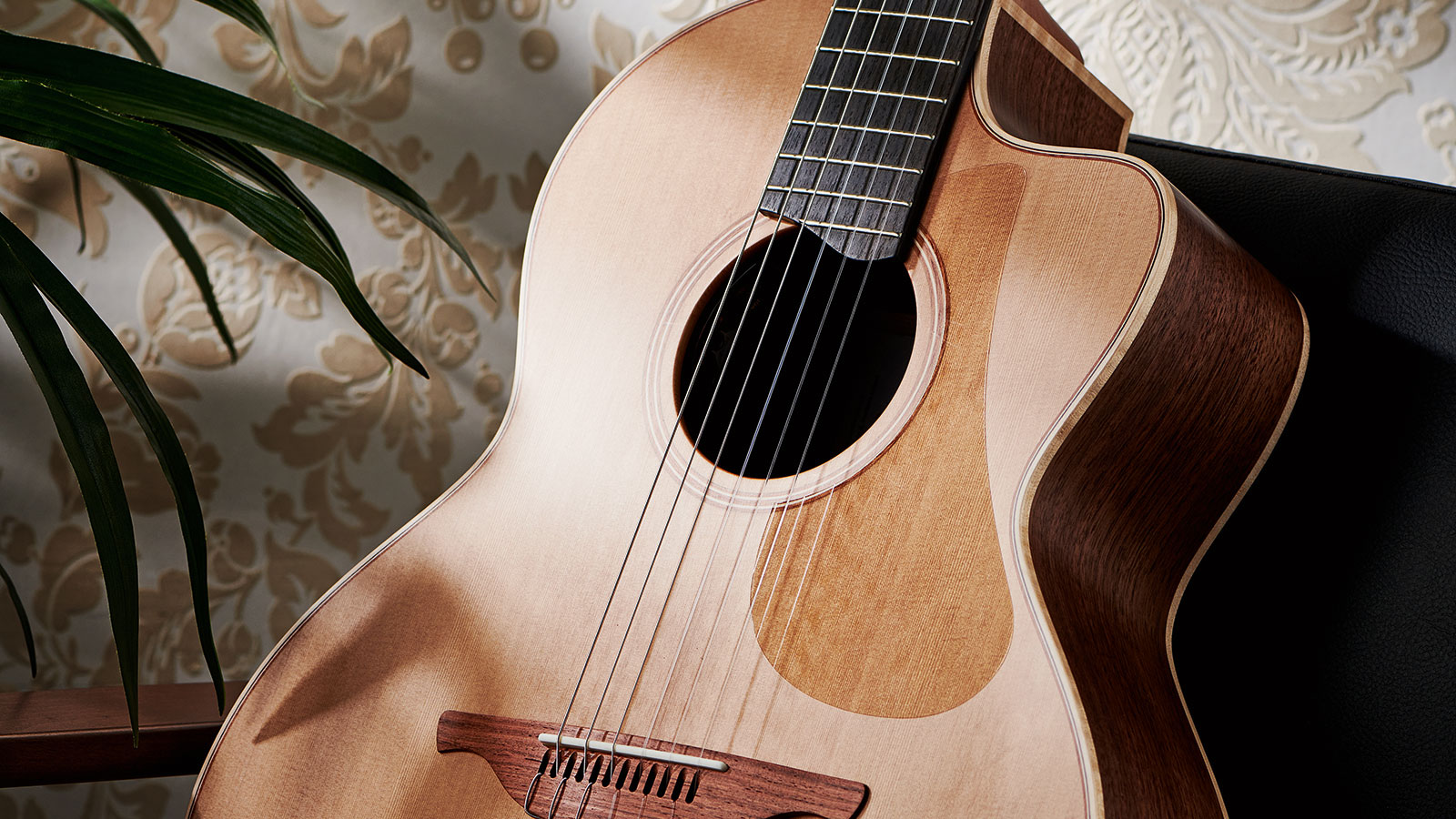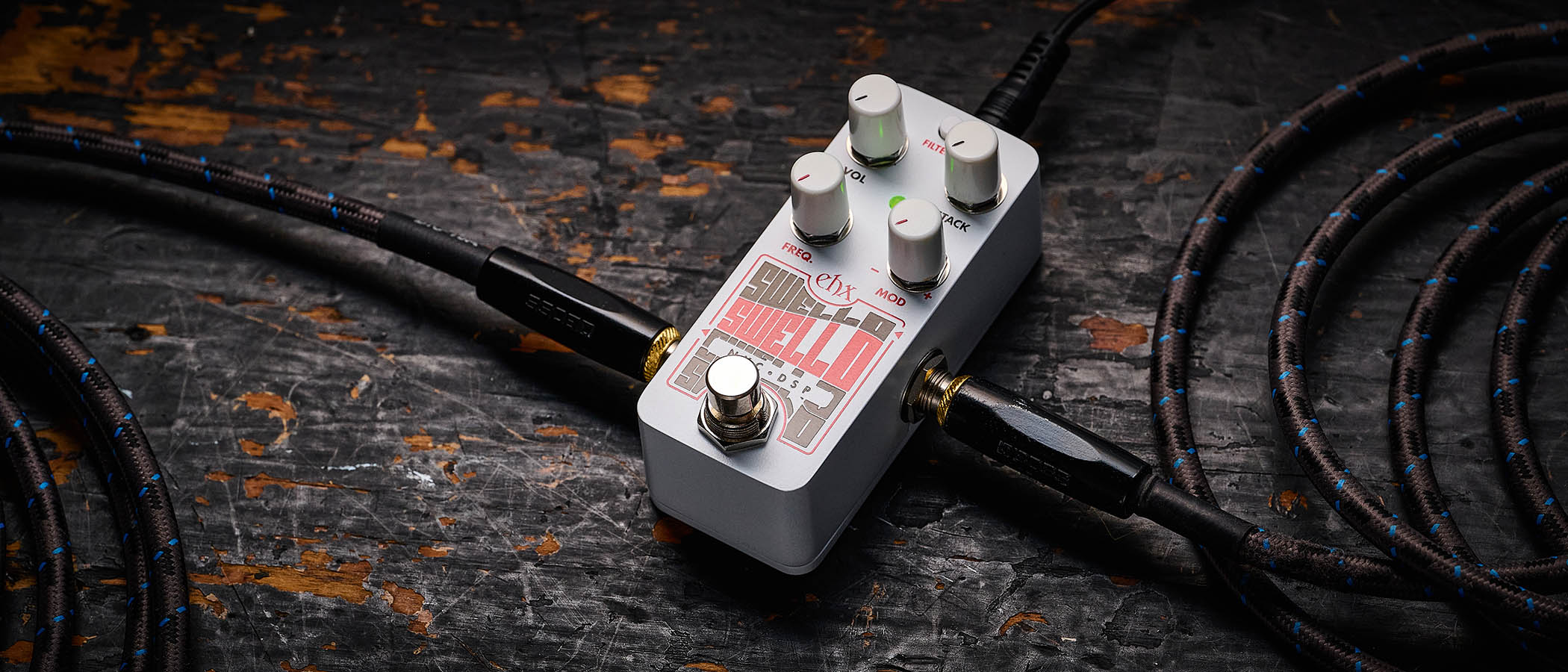Guitar World Verdict
Quite beautiful in construction and sound, it’s a guitar presented in simple style that’s effortlessly playable with a balanced acoustic voice and a pickup system that not only accurately captures that, it enhances it, too.
Pros
- +
Superbly detailed build.
- +
Excellent hybrid stage-aimed design.
- +
Simplistic style and world-class voicing, both plugged in and acoustically.
Cons
- -
It’s a serious investment, but it’s a very serious guitar.
You can trust Guitar World
The Lowden nylon-string Jazz first appeared in 1996, based on the small- body ‘S’. It was revoiced around 2003, benefitting from George Lowden’s continuing research into classical guitar construction that had begun in earnest in the late 80s.
But despite being quite rare birds, for 2022 the Jazz Collection has been expanded to include this red cedar/walnut model, as well as the S-34J (Alpine spruce/koa) and the S-35J (Alpine spruce/ Guatemalan rosewood).
“What we’ve seen in the last three years is just sustained popularity and growth on these Jazz models,” explains Lowden’s Alastair Simpson, adding that although these nylon-strings account for under 10 per cent of Lowden’s production, that figure has risen from under five per cent about five years ago.
“We’ve done very little to promote it, which is why we’re almost relaunching it as such this year. We released the Wee Lowden Jazz in 2019 because there was demand for something a little more portable, but, you’re right, it’s a niche model. But what you don’t see is many of them hanging on walls in shops – they are in demand and they don’t hang around.”
Irrespective of the wood pairing and the nylon strings, the Jazz differs from the steel-string ‘S’ in some fundamental ways. The scale length, for example, moves from 630mm to 650mm, pretty much the Fender-scale and the classic guitar standard, and, while much more lightly braced, the Jazz is only offered as a cutaway electro.
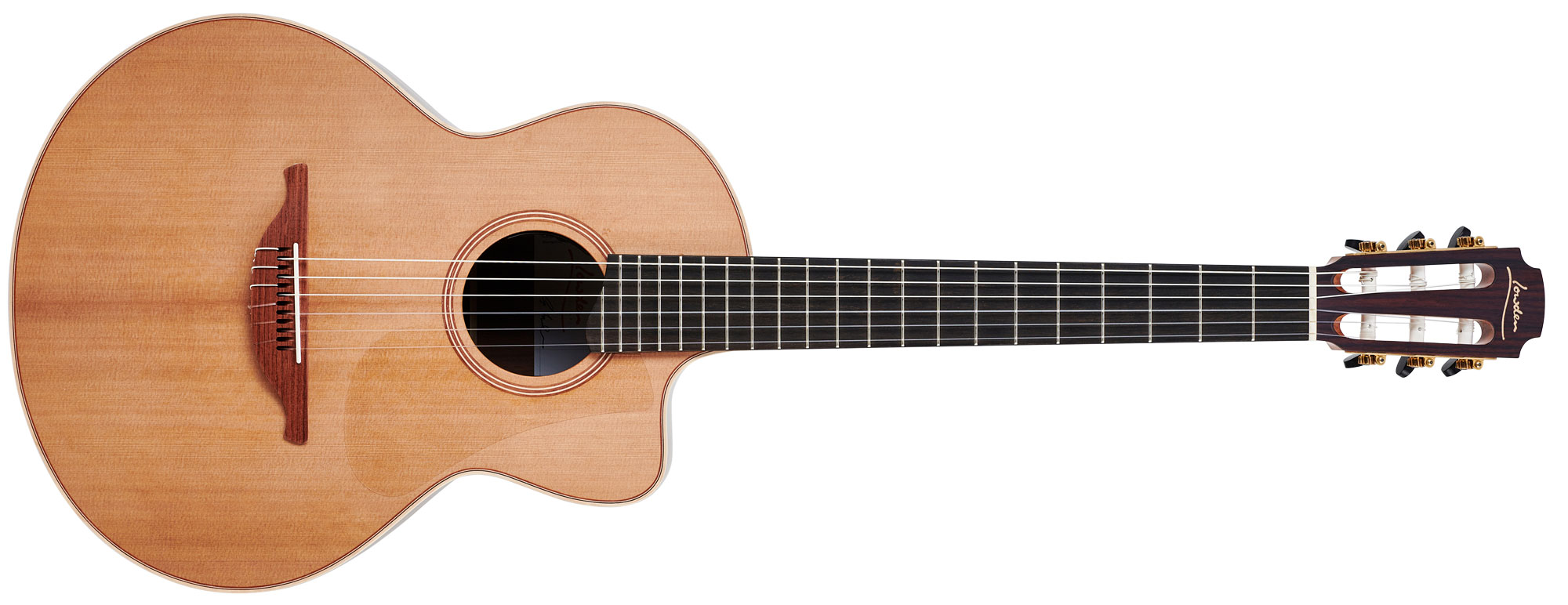
“[It’s] voiced for a really great acoustic response, and at the same time stiff enough for loud volume to be possible without the whole guitar overreacting when played loud through a sound system,” says Lowden. “The tone is very natural and full with none of the over-bright tones sometimes found on too-lightly-built classicals.”
In the flesh, there’s an elegant simplicity to Lowden’s style that never fails to impress, and at this 23 level it pairs a stunningly fine-grained red cedar top with equally attractive walnut sides and back, the latter of which is beautifully striped.
All the latest guitar news, interviews, lessons, reviews, deals and more, direct to your inbox!
The hand-rubbed satin finish is silky to the touch and the neck feels superb, as it should do. This new-for-2022 model is far from an entry-level guitar
“We do use American walnut, although we have dabbled with using English walnut on a few occasions,” offers Alastair. “We alternate between Claro and Bastogne walnut, but they look very similar and it just depends on what’s available – we take the best of what there is. Once we buy it, it goes into stock and we don’t actually differentiate: it’s one or the other.”
There’s virtually zero decoration, simply finely flecked and lightly figured maple binding around the top and back edges with a trio of Rocklite (a product that’s engineered from real and sustainable wood), maple and mahogany purfling on the top only.
Soundhole decoration is subtle, too: a seven-piece ring inlay of rosewood, mahogany and maple. Internally, the guitar is just as exacting, from the kerfed mahogany linings to the four tall and sharp-pointed spruce back braces.
The top bracing obviously differs from the steel-string ‘S’ models’, although “it’s not a traditional classical style”, Alastair tells us, “it’s a Lowden-inspired A-frame design, an adaption of our usual steel-string A-frame. It’s much lighter, the struts are smaller and thinner.”
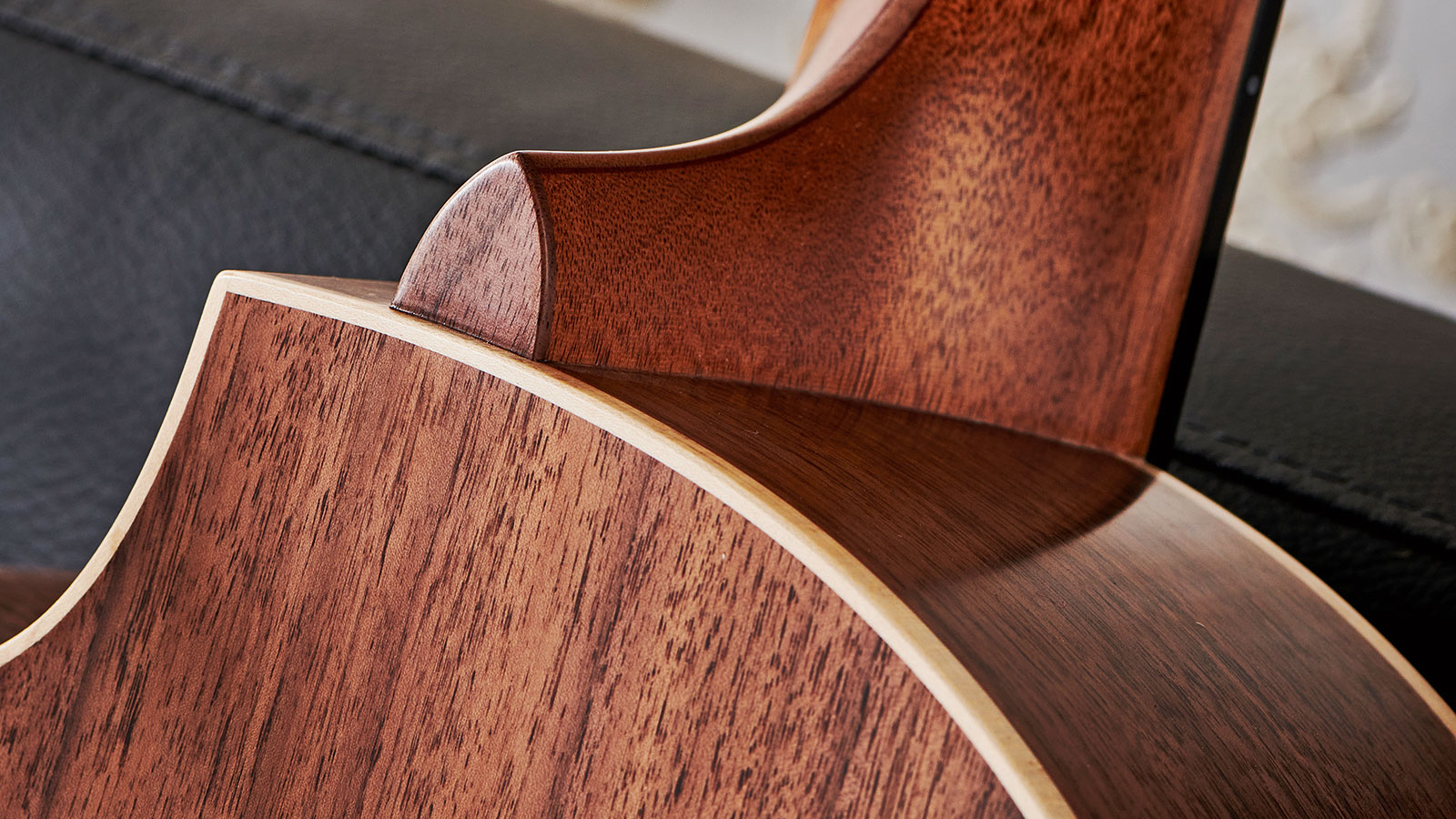
The neck is mainly quarter-sawn mahogany (with no heel stack or headstock splice) with a central stripe of walnut and two thin pieces of purpleheart either side. There is an adjustable truss rod, too, and the fingerboard is lightly cambered, not dead flat like the classical design.
Lowden states the Jazz is designed to appeal to both classical and steel-string players, a hybrid or ‘crossover’ in other words, and here, of course, we have that cutaway plus the guitar is ready to plug in via an LR Baggs Session system, as standard, which we’ll get to later.
But along with that light radius to the fingerboard, the nut width, which is measured at 48.46mm (with string spacing of 39mm, widening to 58mm at the bridge), is wider than a typical steel-string but under the 50mm/52mm classic standard. The neck shape is very different from the often flat- backed Spanish classical style, too, with a beautifully graduated ‘C’.
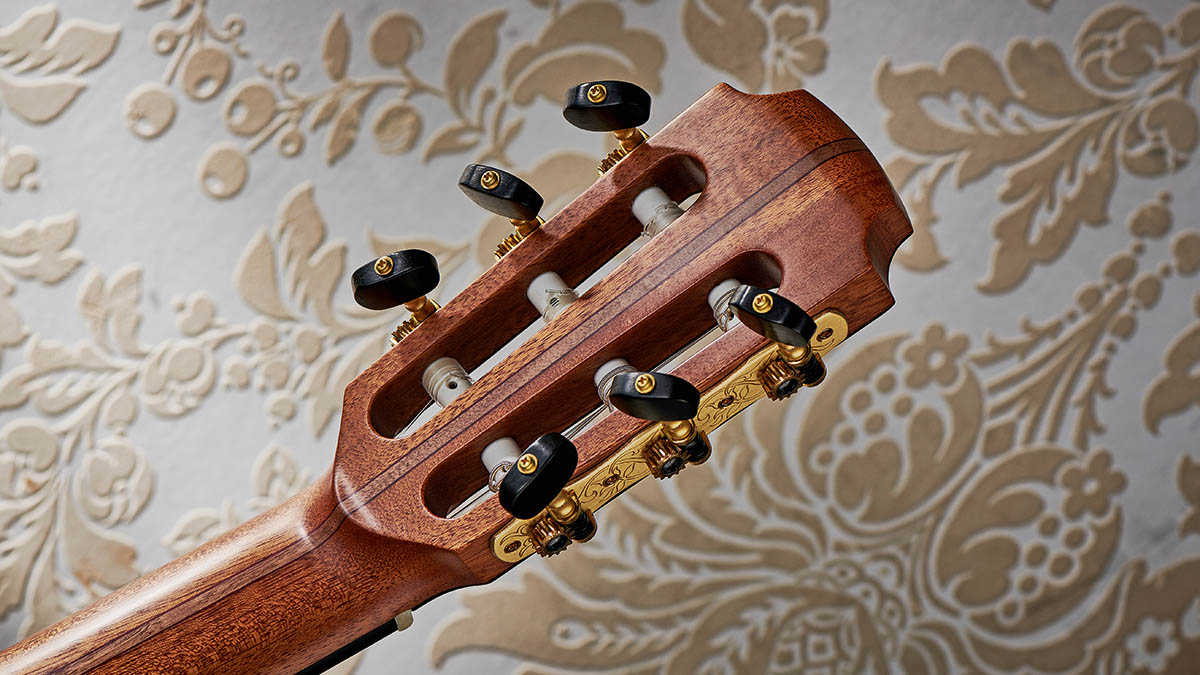
Typically, we have a slotted headstock with a set of Gotoh Classical tuners with engraved muted gold-colored plates and polished ebony buttons, while the bridge is made from Honduras rosewood and uses a 12-hole string attachment, rather than a classical’s six-hole tie-block style.
“This was always a part of the Jazz design,” offers Alastair, “but it was refined further about four years ago and it was inspired by the through-string Lowden method we use on the steel-strings.” There’s also a single- piece bone saddle that appears very slightly compensated, as opposed to Lowden’s usual two-piece design, unnecessary here with the nylon strings – which incidentally mix Savarez Red Alliance trebles with D’Addario Pro-Arté basses.
The hand-rubbed satin finish is silky to the touch and the neck feels superb, as it should do. This new-for-2022 model is far from an entry-level guitar, though it is the lowest-cost model in the Jazz Collection, along with the existing S-25J (East Indian rosewood/red cedar).
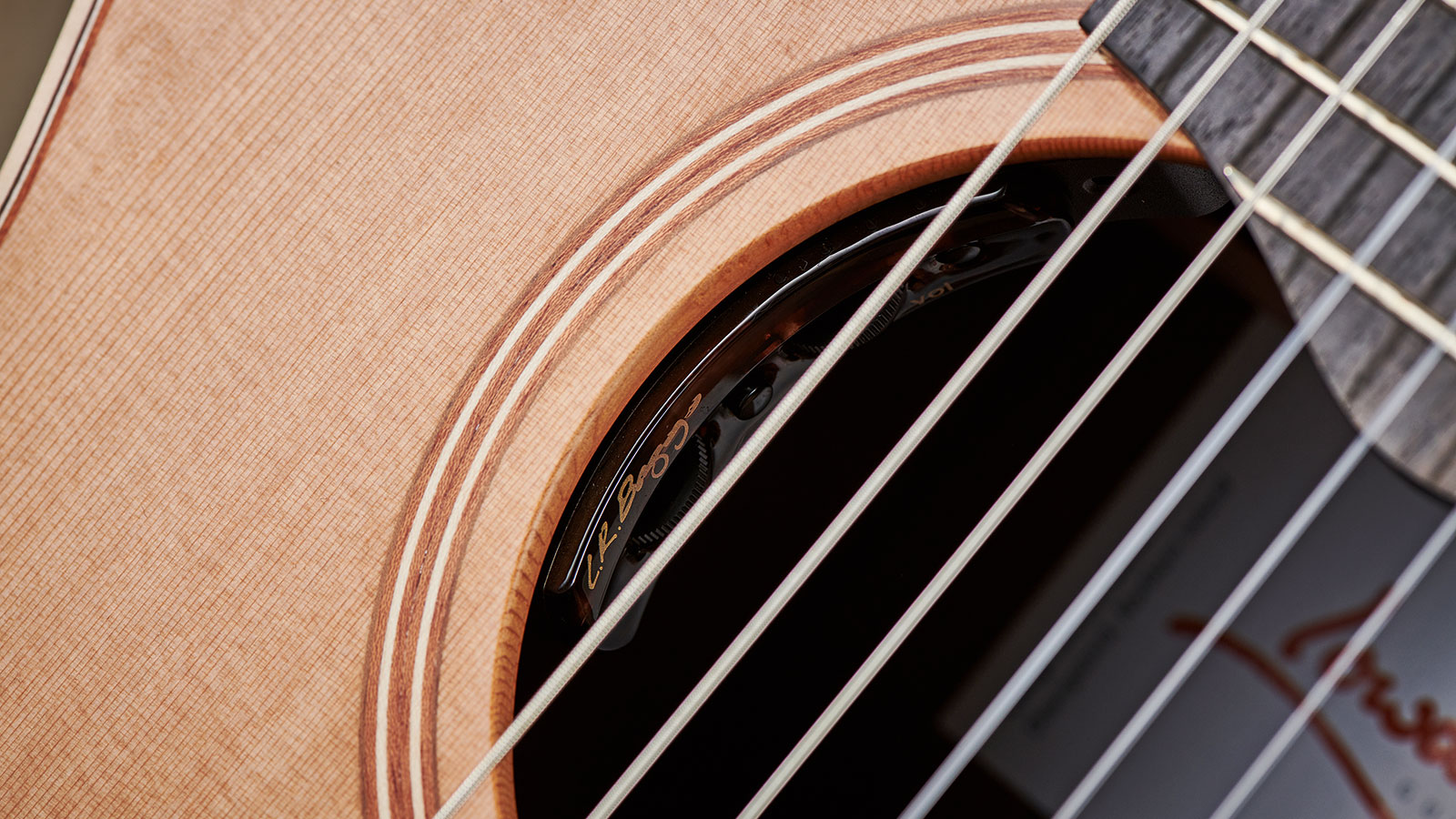
Feel & Sounds
If you’re coming from the classical guitar world this may feel a little alien with its relatively deep body and chunkier feel. But it won’t feel that way to steel-string players, or the many of us who use more modern crossover-style nylon-string electros.
The pared down width of the neck – not to mention that it’s a 14-frets not 12-frets- to-the-body design – will again take more adjustment from a typical concert classical than if you’re a steel-string player.
Typically, too, the string action is higher than a steel-string (2.3mm on the treble side, 2.8mm on the bass side), but it’s lower than many classicals – helped by in-building a little more relief on the bass side of the fingerboard – and for the style it frankly feels very slinky.
The cedar top has surprising volume hit hard – yet, importantly, remains very balanced between the basses and trebles
This is a guitar that takes moments of playing to feel very comfortable, not least that while a classical is usually totally devoid of position markers here we at least get some very handy side dots.
Of course, nylon-string guitars aren’t used just for classical music, and guitars such as this encourage you to break the rules in terms of musical and playing style. You don’t have to have fingernails, indeed a pick-and-fingers hybrid technique is certainly allowed, while the Jazz of its name references the huge canon of Latin jazz. It’s deceptively responsive, too.
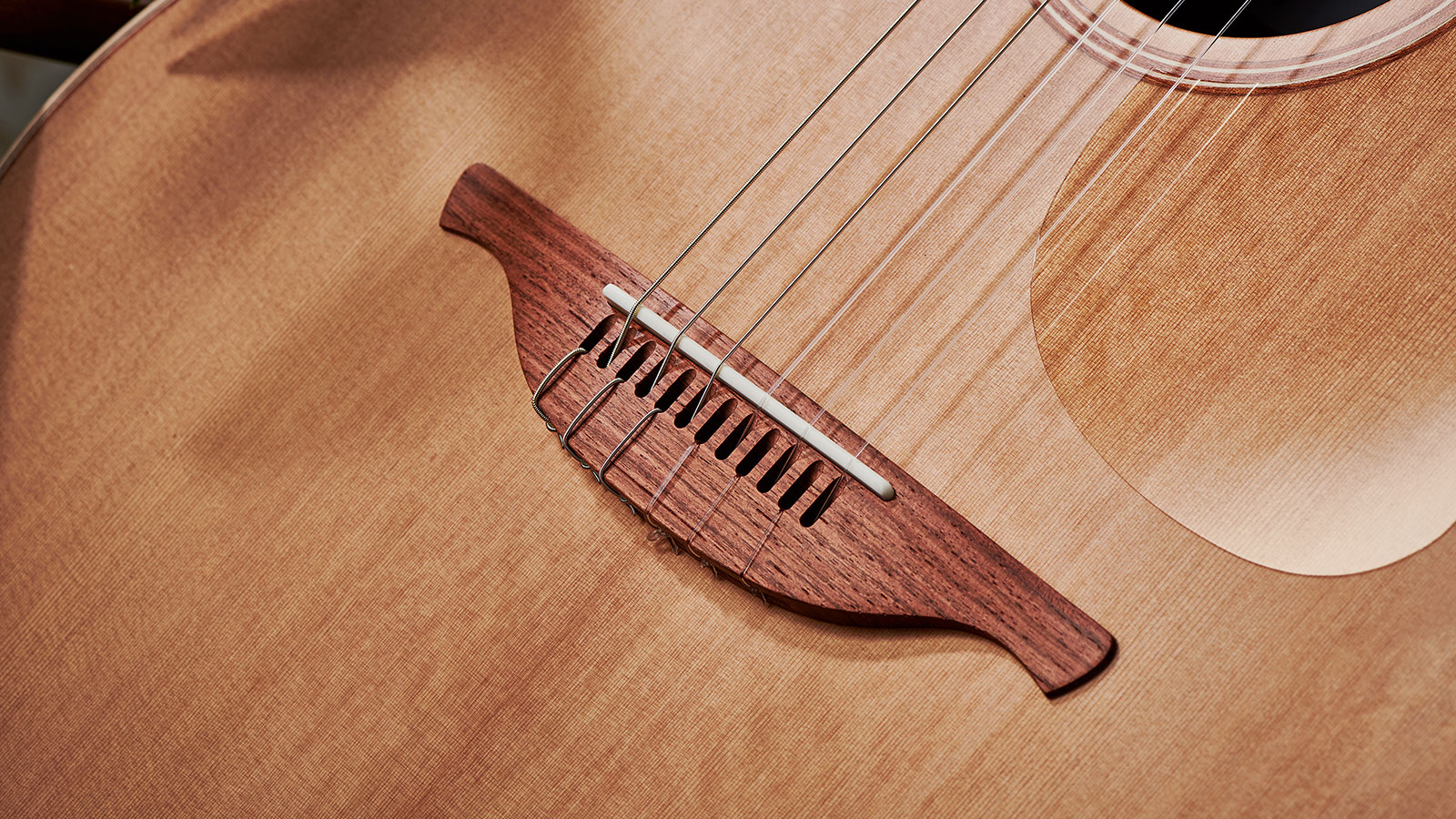
While we might expect the cedar top to be a little softer and more compressed than spruce, it has surprising volume hit hard yet importantly remains very balanced between the basses and trebles in softer more intimate fingerstyle, particularly in that classic, subtly percussive Gilberto-style bossa.
By design, we don’t have that almost papery thin flamenco voice; this is much more robust. But there’s still enough snap to the trebles to easily capture a more Spanish vibe if you need it.
While the LR Baggs system here features a thin-film Element under-saddle transducer (designed to mitigate the ‘quack’ common in other under-saddle pickups), the small control panel mounted on the bass side of the soundhole includes both volume and tone rotaries, plus small push-switches for phase and battery status.
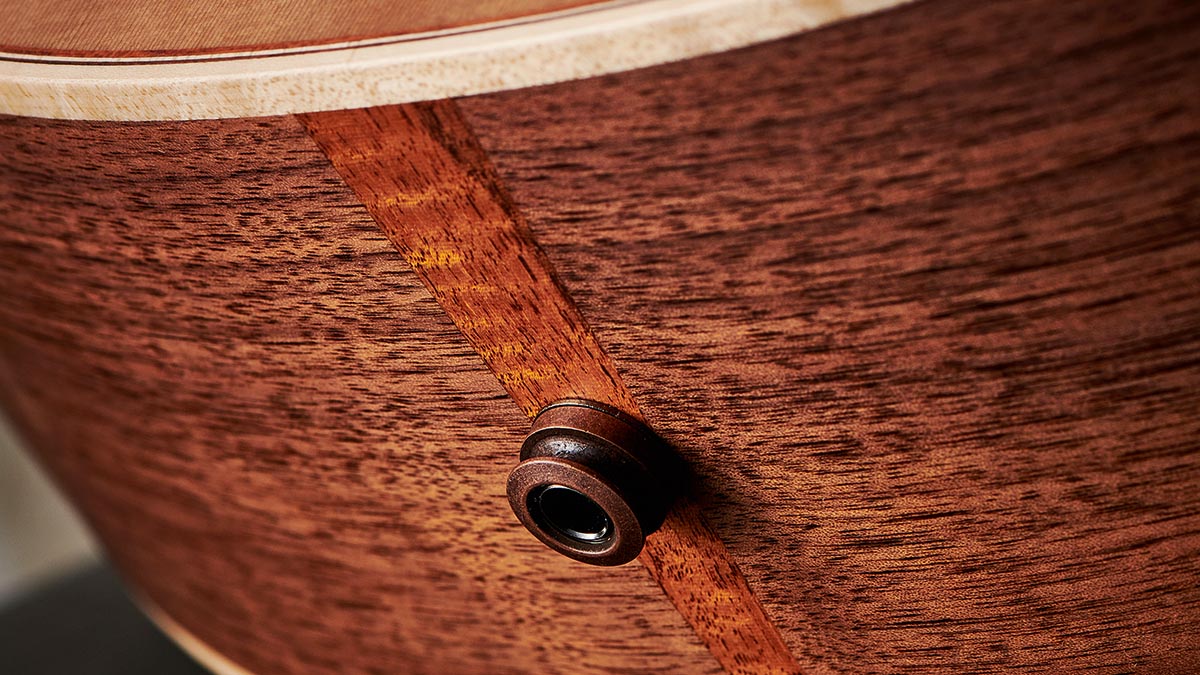
Internally, the Session offers ‘dynamic EQ’, as the company’s website explains: “Like having your very own sound engineer responding to the way you play, this circuitry continually suppresses problematic frequencies common in live performances, allowing the best qualities of your guitar to come through the mix.
The built-in low, mid and high-frequency compressors are essentially ‘touch-sensitive’ EQs that respond in real-time to your dynamics. The harder you strum, the more they compress and vice versa.”
Well, whatever is going on under the hood, the amplified sound is really top dollar and the key here is the tone control, which seems to work primarily on the high-end. At one extreme it’s an almost clichéd nylon sound with a soft, rounded attack that’s beautiful for lyrical leads, not least with a pick.
At the other end of the travel we have a much more realistic voice, slightly brighter, more Spanish-sounding than the unplugged voice. In combination with your picking position, the guitar covers a lot of ground with minimal fuss. It’s effortless.
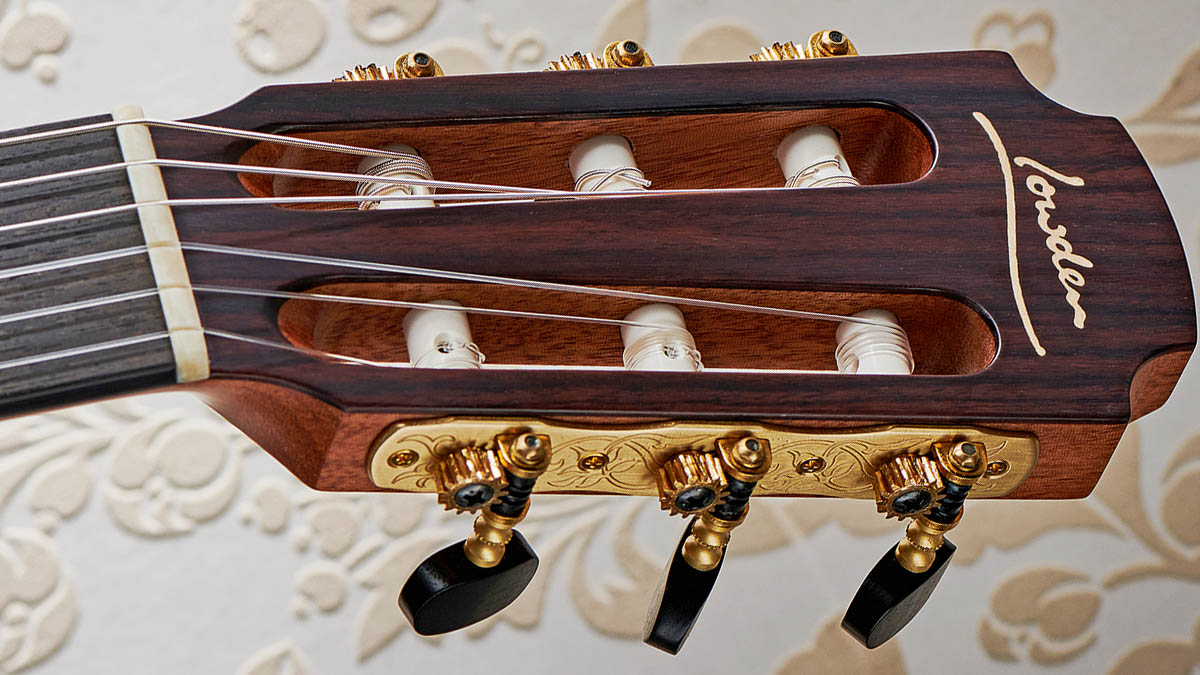
Verdict
We’ve argued on many occasions that the blending of the nylon-string classical guitar with the steel-string is one of the most interesting areas of acoustic guitar design. And although Lowden is certainly known more for the latter, now that we’re finally getting to play one of these seemingly rare birds, it’s quite the hybrid.
Yes, at this price it should be good, very good, although to put that into perspective it’s cheap in the serious classical guitar world.
It’s obviously not the guitar for those who just want to add a couple of nylon-string overdubs to their latest recording; it’s aimed at the well-heeled enthusiast or serious player who really wants to embrace the world of the nylon-string, especially amplified, where the devilishly simple LR Baggs system works considerable magic.
Specs
- PRICE: £4,910 (Approx. $5,952, inc hard-case)
- ORIGIN: Northern Ireland
- TYPE: 14-fret Lowden small body size with cutaway
- TOP: Red cedar
- BACK/SIDES: Walnut
- MAX RIM DEPTH: 106m
- MAX BODY WIDTH: 375mm
- NECK: 5-piece mahogany/ rosewood
- SCALE LENGTH: 650mm (25.6”)
- TUNERS: Gotoh Classic Gold with ebony buttons
- NUT/WIDTH: Bone/48.46mm
- FINGERBOARD: Ebony, 508mm (20”) radius with side dot markers
- FRETS: 21
- BRIDGE/SPACING: Honduras rosewood w/ bone saddle/58mm
- WEIGHT (kg/lb): 1.9/4.18
- ELECTRICS: LR Baggs Session
- VTC OPTIONS: None
- RANGE OPTIONS: The standard Jazz models are the S-25J (red cedar/East Indian rosewood), S-32J (East Indian rosewood) and WL-35J (Alpine spruce, Guatemalan rosewoods). For 2022, along with the S-23J are the S-34J (Alpine spruce/koa) and S-35J (Alpine spruce/Guatemalan rosewood)
- LEFT-HANDERS: No
- FINISH: Hand-rubbed natural satin
- CONTACT: Lowden Guitars

Dave Burrluck is one of the world’s most experienced guitar journalists, who started writing back in the '80s for International Musician and Recording World, co-founded The Guitar Magazine and has been the Gear Reviews Editor of Guitarist magazine for the past two decades. Along the way, Dave has been the sole author of The PRS Guitar Book and The Player's Guide to Guitar Maintenance as well as contributing to numerous other books on the electric guitar. Dave is an active gigging and recording musician and still finds time to make, repair and mod guitars, not least for Guitarist’s The Mod Squad.
